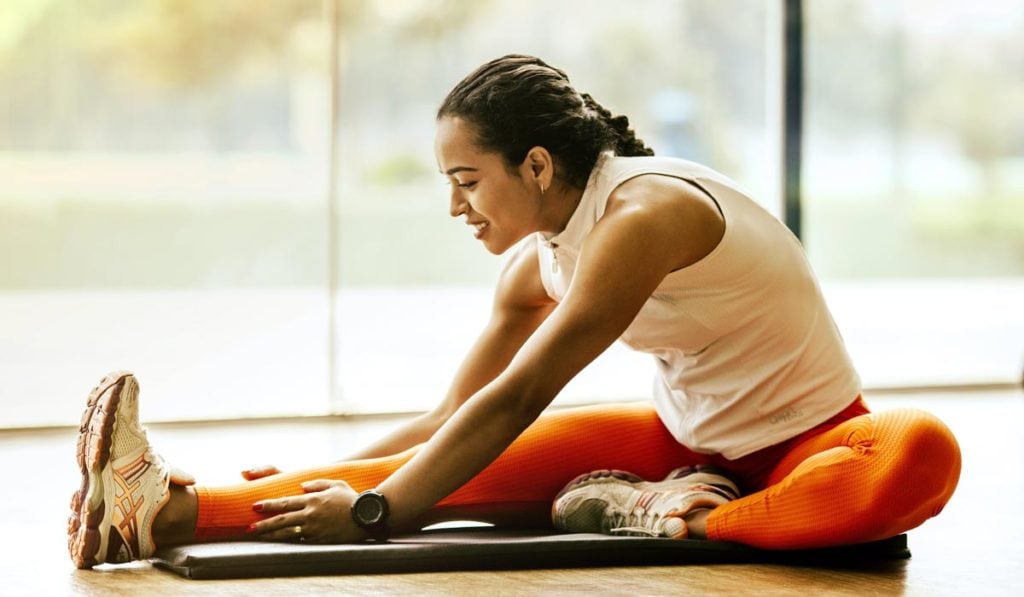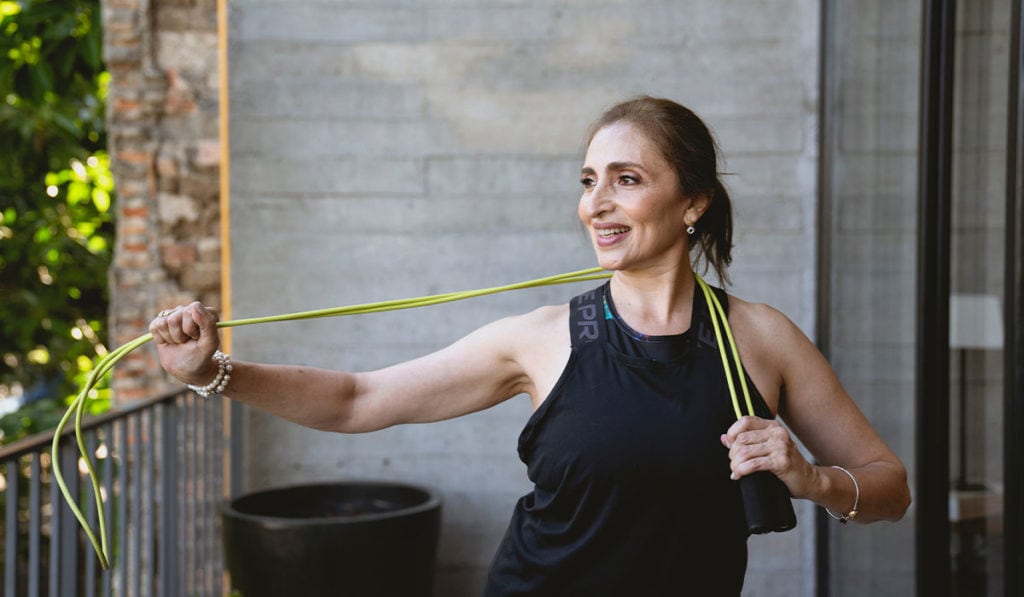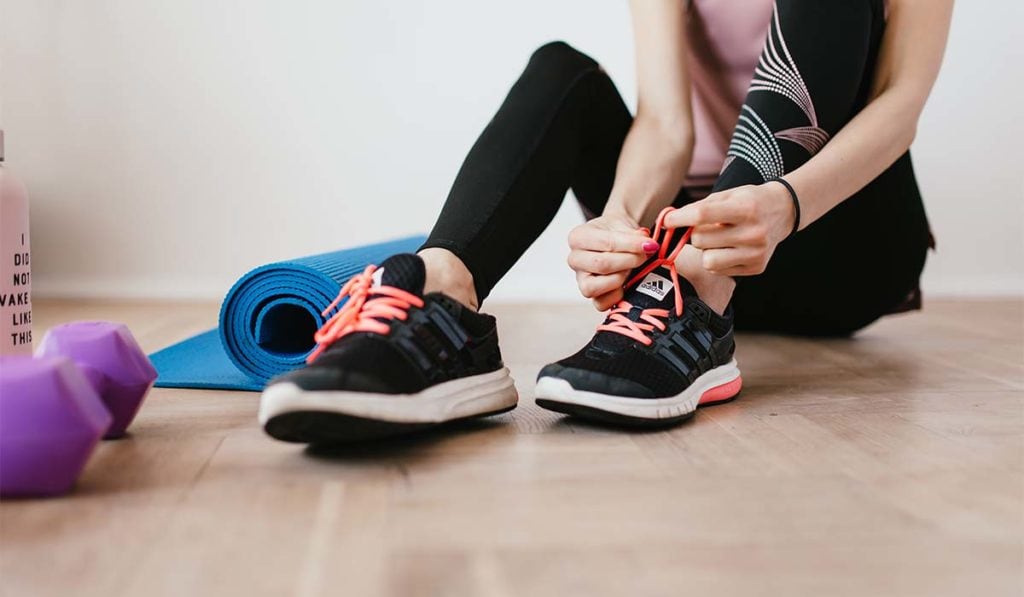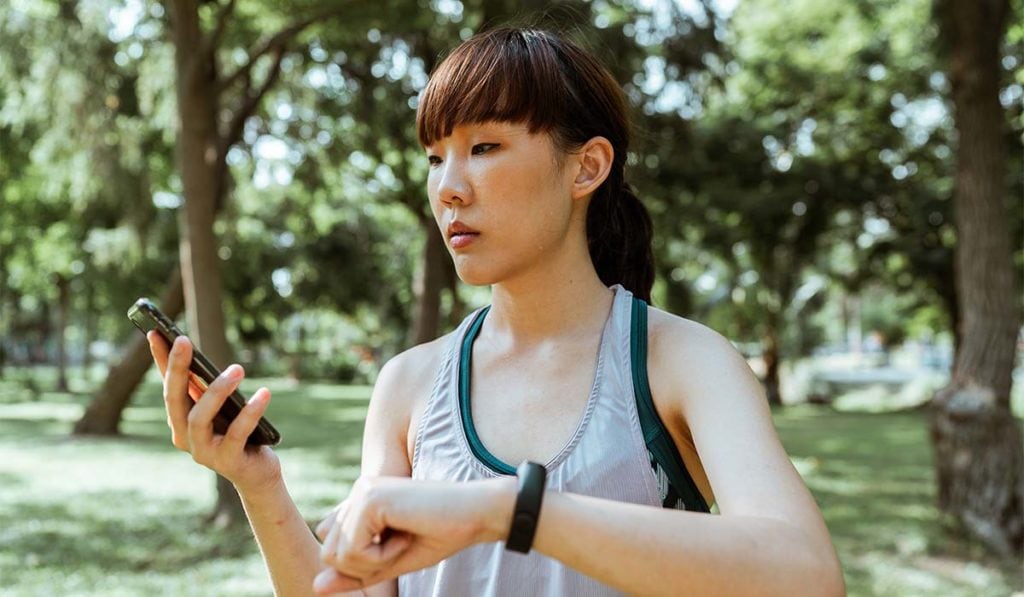
Running vs. Cycling: Which is Better?
- Is running or cycling better for cardiovascular health?
- Is running or cycling better for gaining lean muscle mass?
- Is cycling or running better for weight loss?
- What are the risks of injury between running vs cycling?
- What other factors should I consider with running vs cycling?
- How can I incorporate both running or cycling into my workout routine?
- Key Takeaways:
Running and cycling are both excellent forms of cardio that have many health benefits and will help improve your overall health and fitness. But which is ultimately better for you? Let’s look at some of the main differences between running vs cycling to help determine which might be better for you.
Is running or cycling better for cardiovascular health?

Cardiovascular health refers to the health of your heart and blood vessels. Regular physical activity, whether running, cycling, or something else, can help prevent cardiovascular diseases like coronary heart disease, heart failure, and stroke.1
So, which is best for your heart: running or cycling? The simple answer is neither one is better than the other for heart health. Both running and cycling provide excellent heart health benefits.
For example, regular cycling improves circulation in your heart and lungs, reducing your risk of cardiovascular diseases. It also strengthens your heart muscles, lowers your resting heart rate, and reduces blood fat levels.2
Similarly, research indicates running also reduces the risk of cardiovascular diseases. The amount of running doesn’t matter so much. Whether you run 10 miles a day or do a light jog around your neighborhood for 5 to 10 minutes, you’ll reap the cardiovascular benefits of running.3
Is running or cycling better for gaining lean muscle mass?

If your goal is to gain lean muscle mass, cycling and running will both help you build muscle mass (mainly in your lower body), but running may be the better option.
On its own, running won’t make a massive difference in how your muscles look, but it can help you burn fat, making your muscles look more defined and toned. If you want to get toned muscles, the key is to work your muscles for longer without fatiguing too quickly.4
Try running for longer periods, even if it means running a little bit slower. You’ll need to incorporate strength training into your exercise routine to gain even more lean muscle mass.
Is cycling or running better for weight loss?

Although you might assume running would burn more calories than cycling, that’s not always the case. In terms of burning calories, running and cycling actually burn about the same amount of calories.
According to Harvard Health, a 155-pound person burns about 288 calories when biking 12 to 13.9 miles per hour and running a 12-minute mile (5 miles per hour).5
Of course, other factors will influence the number of calories you burn doing either activity, such as:
- Intensity: If you’re cycling vigorously for 30 minutes, you’ll likely burn more than just 288 calories. And similarly, if you’re running any slower than 5 miles per hour, you won’t burn as many calories.
- Your weight: People who weigh more will burn more calories while cycling or running. Those who weigh less will burn fewer calories while doing either activity.
- Terrain: Your body will need to work harder running or biking uphill or through technical terrain, burning more calories. However, running or biking on a flat, smooth surface doesn’t require as much physical effort, so you’re likely to burn fewer calories.
What are the risks of injury between running vs cycling?

Like many physical activities, both cycling and running come with some risk for injuries. The most common running injuries include:6
- Plantar fasciitis: This condition causes pain in the bottom of the foot, running from your heel to the arch of your foot.
- Runners’ knee: This common knee injury is characterized by pain underneath or around your kneecap.
- Iliotibial band (ITB) syndrome: This condition causes pain on the outside of your knee while running. It can also cause pain on the outside of your hip or leg.
- Achilles tendonitis: This usually causes pain with a heel strike, when you’re running up stairs, when you suddenly change directions, or when your foot lands on a curb.
- Shin splints: These cause pain in your shins while running. At first, you might only feel it right after running, but eventually, the pain can become persistent.
- Stress fractures: Most often, these cause persistent pain in the shin. However, they can also cause foot, hip, thigh, or pelvis pain.
Likewise, cyclists may be more likely to experience specific injuries, like:7
- Knee pain: This is one of the most common overuse injuries in cycling and can involve pain around your kneecap or in your outer knee.
- Neck/back pain: Riding in one position for too long, having too low handlebars, or having tight hamstrings or hip flexor muscles can cause cyclists to have neck or back pain.
- Wrist pain/numbness: Cyclist’s Palsy and Carpal Tunnel Syndrome are two common overuse injuries among cyclists.
- Pudendal neuropathy: This is numbness or pain in the genital or rectal area caused by a lot of time spent in the saddle.
- Foot numbness/tingling: If you cycle while wearing shoes that are too tight or narrow, you might experience numb or tingling feet due to pressure in your lower legs and resulting compressed nerves.
- Head injuries: Falls off the bike often lead to head injuries, ranging in severity from a few cuts or scrapes to traumatic injury, depending on the circumstances. (Wearing a helmet drastically reduces your risk for head injuries.)
What other factors should I consider with running vs cycling?

A few other factors might help you determine whether running or cycling is a better option for you, including:
- Expenses: Running is an exceptionally inexpensive activity for beginners. All you need is a pair of shoes. Comparatively, cycling requires a bike and helmet, at the very least. If you plan to cycle at night outdoors, you’ll also want to invest in reflective equipment to be safe.
- Chronic conditions: If you have any health problems that may make either type of exercise difficult for you, it’s best to talk with your doctor before you begin any new cycling or running routine.
- Personal preference: Perhaps most importantly, you’ll also want to consider which activity you like more: cycling or running. If you enjoy the thrill of biking but find yourself getting bored while running, cycling might be a more enjoyable way for you to stay fit and healthy.
How can I incorporate both running or cycling into my workout routine?

If you can’t decide which you like better, you can easily include both running and cycling in your workout routine. Whether you prefer to cycle two days of the week, run on four of the other days, and rest on the seventh day (or however else you’d like to break it up), cross-training is a balanced and healthy way to enjoy both types of exercise in your weekly routine.
With Vingo, you can easily run or cycle indoors with a simple indoor trainer or treadmill. Instead of enduring boring exercise sessions, Vingo allows you to travel and explore the world (virtually) as you stay fit, have fun, and clock those miles.
Looking for fitness activities to help you keep your heart healthy? Look no further than our blog, 7 Types of Workouts That Improve Your Heart Health.
Key Takeaways:
Both cycling and running are excellent forms of cardio and are great ways to stay healthy. One isn’t necessarily better than the other. It mainly comes down to personal preference and ability.Sources:
- https://www.cdc.gov/heartdisease/prevention.htm
- https://www.betterhealth.vic.gov.au/health/healthyliving/cycling-health-benefits
- https://bjsm.bmj.com/content/54/15/898
- https://pubmed.ncbi.nlm.nih.gov/22030953/
- https://www.health.harvard.edu/diet-and-weight-loss/calories-burned-in-30-minutes-for-people-of-three-different-weights
- https://health.clevelandclinic.org/the-most-common-running-injuries-plus-how-to-treat-them/
- https://www.urmc.rochester.edu/orthopaedics/sports-medicine/cycling-injuries.cfm








